15 Companion Plants for Pumpkins (With Pictures)
-

- Last updated:

Growing pumpkins is an incredibly rewarding experience. You will enjoy every moment of propagating the plant from seeds, all the way to harvesting the iconic orange pumpkin. However, these plants require regular maintenance, pest control, frequent watering, and additional soil nutrients to thrive.
Fortunately, you can easily help pumpkins thrive in your vegetable garden through companion planting. This concept has been around for many years, availing several benefits that will help you increase the yields of your harvest. Initially, Native Americas utilized “the three sisters” as partner plants for most vegetables. However, gardeners nowadays have discovered many other plants that can be planted together with pumpkins for maximum results.

The 15 Great Companion Plants for Pumpkins
Vegetable Companions
As a vegetable itself, pumpkins do well when planted with other vegetable species. These plants will grow well with the pumpkin vines. They include:
1. Corn
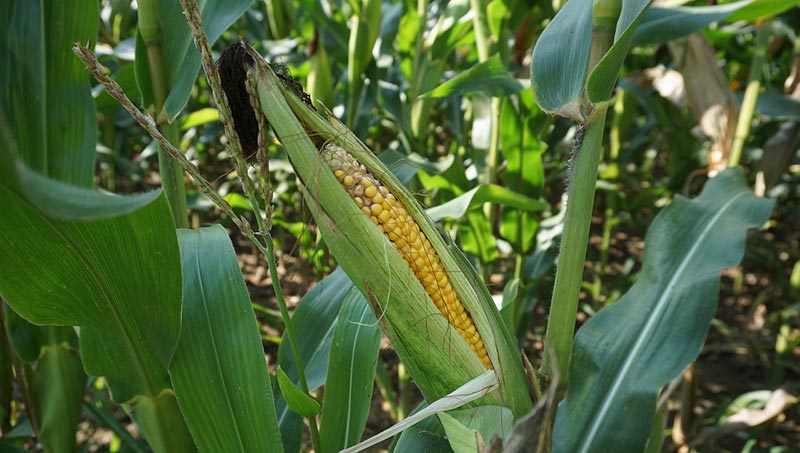
Corn is a well-known member of the “three sisters,” a name given to the companion planting triad that includes corn, pole beans, and squash. Corn is the tallest member of the three sisters’ family and is a versatile plant with many uses.
When planted next to pumpkins it makes an excellent partner plant. It shades pumpkins from hot weather as well as creates boundaries for your pumpkin patch. It also provides the trellis required for pumpkin vines to spread and thrive.
The pumpkins will also help the corn by providing adequate ground cover to discourage weed growth and minimize water loss. Corn stalks need to be planted close to each other for the best pollination rates because the plant relies on wind instead of insects for pollination.
2. Pole beans
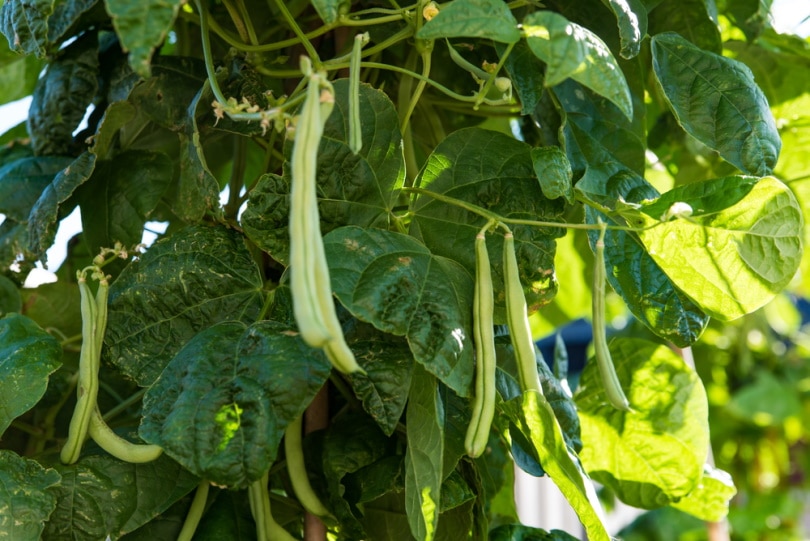
Pole beans are the second sister among the three and are an ideal companion plant because they help add nitrogen to the soil. They usually gather nitrogen molecules from the air and convert them to a form that can be absorbed by other plants from the soil.
So, as a pumpkin partner plant, your plants will never be nitrogen-starved. Also, when planted next to pumpkins, they provide shade and support for the pumpkin vines which love climbing. Moreover, pole beans will help save up space in your home garden because they grow vertically up the corn, allowing more space for the pumpkins to spread at the ground level.
3. Squash
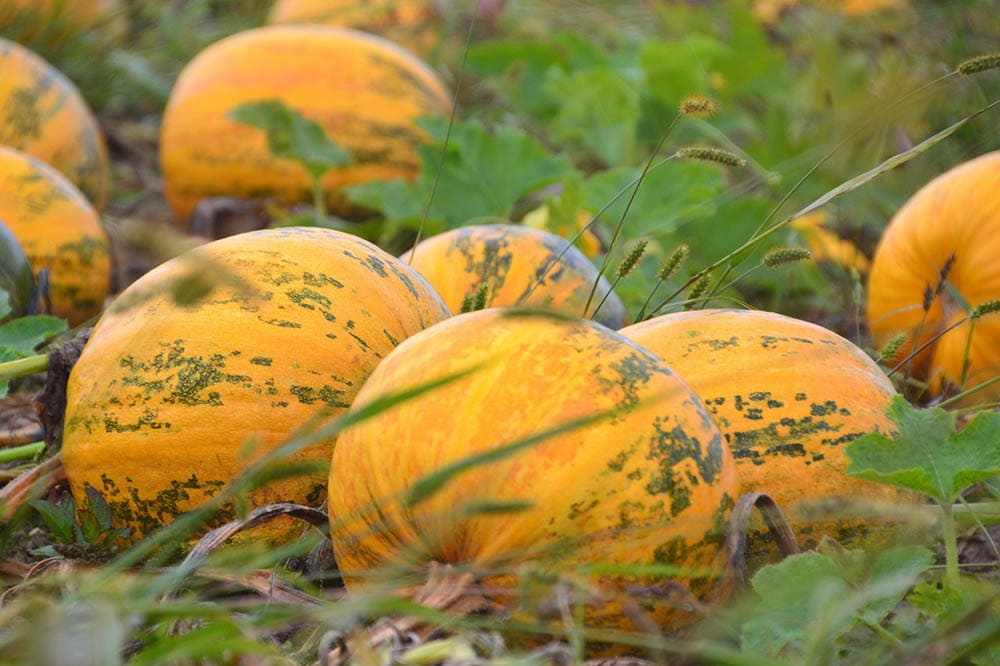
This is the third member of the three sisters but also belongs to the same family as pumpkins. Even more exciting, squash can cross-pollinate with pumpkins in the same generation because they are members of the same species. This plant shares similar growing conditions, including water, sunshine, soil, and nutrient requirements.
The other reason why squash is an ideal partner plant is because of its color. They both feature bright colors that easily confuse insect pests set to attack them.
4. Tomatoes
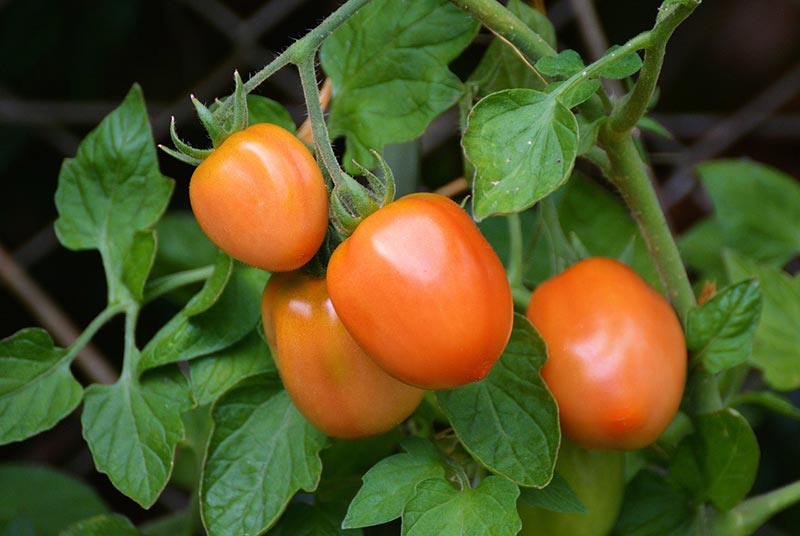
Pumpkins and tomatoes are excellent partner plants because they share similar growing conditions. These plants can benefit from each other, much like the three sisters’ category. The tomato plant grows tall, allowing the pumpkin plant to spread across the ground, shading out the weeds and inhibiting their growth. It also deters insects that would otherwise eat and damage your pumpkin plants.
When partnering these plants, ensure that they grow at least 2 feet apart to minimize confusion in your garden. This space will also be enough to accommodate the plant’s widespread fibrous root system. You should also plant your tomato plant along the edges of your pumpkin garden for easier harvesting.
5. Radish
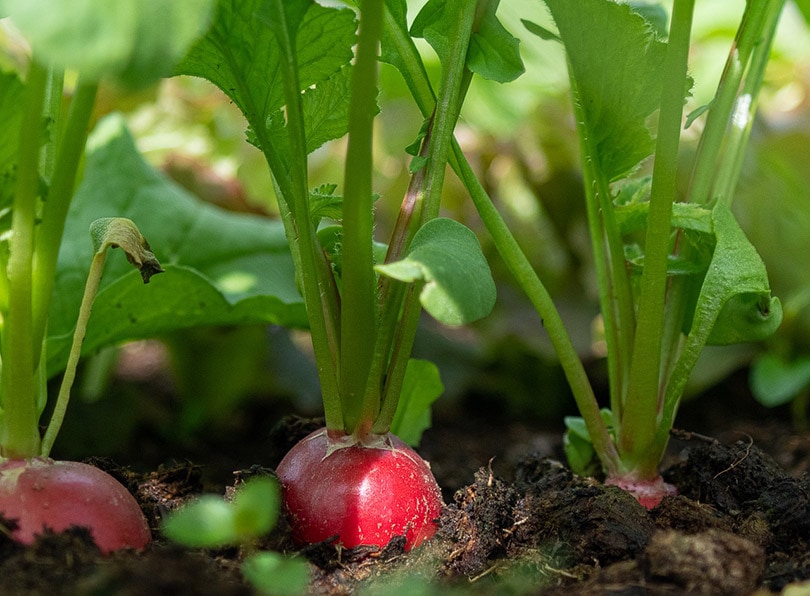
As a pumpkin companion plant, radishes can best serve as a decoy plant for different pests. Flea battles are notoriously known to attack radish plants. So, when radish and pumpkins are growing together, flea beetles are more likely to forgo pumpkins for their favorite radish plant. Therefore, radish is more of a sacrificial plant when planted next to pumpkins.
Flower Companions for Pumpkins
Some flowers make excellent companions as they attract helpful insects to the plants. These include wasps, butterflies, bees, and ladybugs. The flowers can also transform your vegetable garden with beautiful blooms, especially in the fall. They include:
6. Marigolds
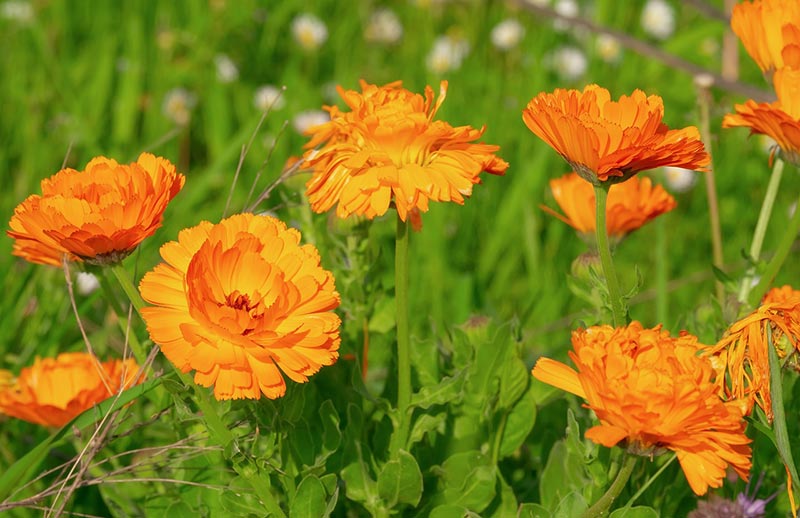
Marigolds are suitable companion plants for pumpkins because they can deter root-knot nematodes and repel any soil pests that can damage your crops. They also attract beneficial pollinators to the plants. The roots of marigolds normally produce bioactive chemical substances that insects cannot stand to be close to for a considerable period.
Gardeners advocate for planting this flowering plant next to pumpkins to improve harvests. You can also plant marigolds in your vegetable garden as ground cover crops to protect the soil before seeding your pumpkin in the ground.
7. Lavender
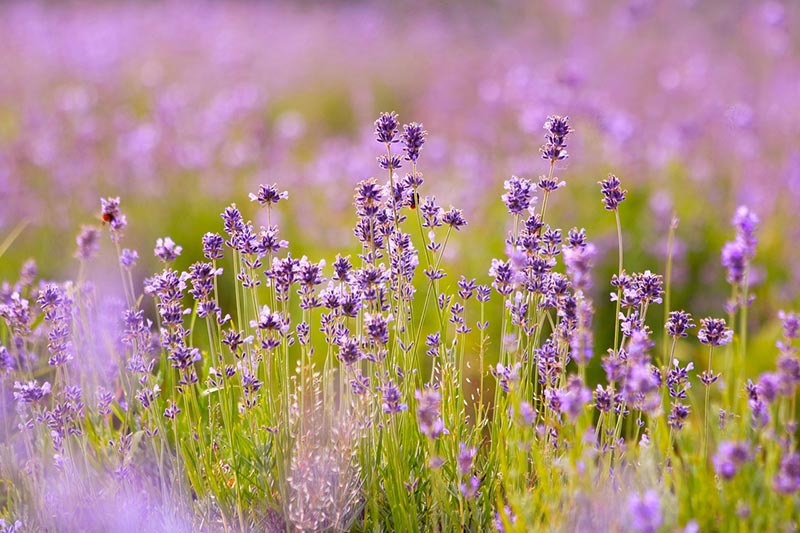
There are different species of aromatic plants that produce chemicals that can help you to grow healthy pumpkin plants. Lavender is among the most beautiful flowering plants and is an excellent companion plant for pumpkins. This plant is known to produce a powerful pleasant scent that attracts beneficial insects like bees and butterflies to your home garden. Lavenders can also prevent pests and protect your plants from harmful diseases.
8. Nasturtiums
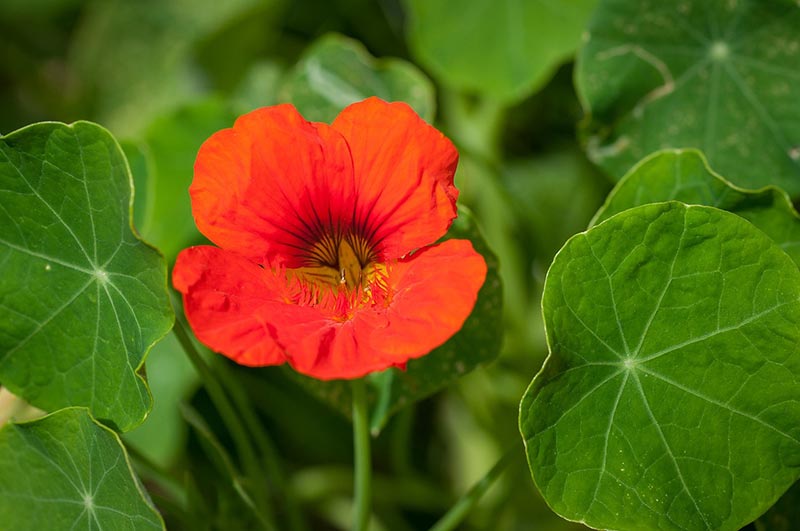
This is another flowering species that does well when growing next to pumpkins. Nasturtiums will repel bugs such as cucumber beetles and aphids that feed on pumpkin vines. They also attract beneficial insects like wasps and ladybugs that prey on common plant pests. Nasturtiums are also great as ground cover plants that prevent weeds from taking over your home garden.
9. Sunflowers
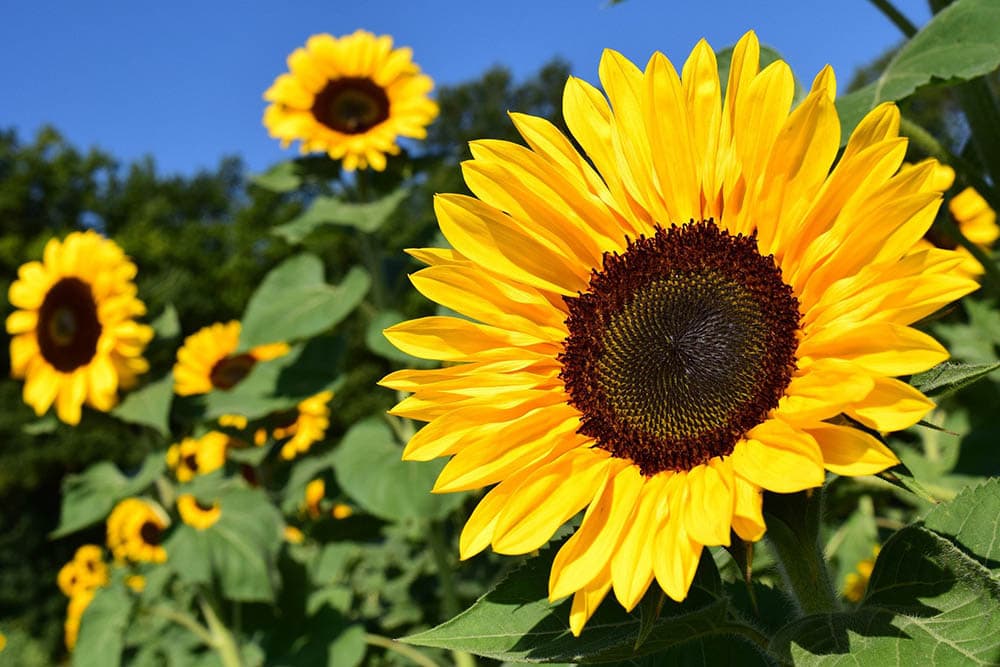
These bright and colorful plants are suitable pumpkin companion plants because they attract beneficial pollinators to your garden and can repel some harmful insect species. Their broad leaves also shade your pumpkin plants from direct sunlight.
Sunflowers are best planted as border plants to create a barrier against animals like raccoons that could otherwise damage your pumpkin vines. Furthermore, the thick sunflower stalks provide support for pumpkin vines, which supports blooming and improves the growth of your pumpkin plants.
Fruit Companions for Pumpkins
10. Melons
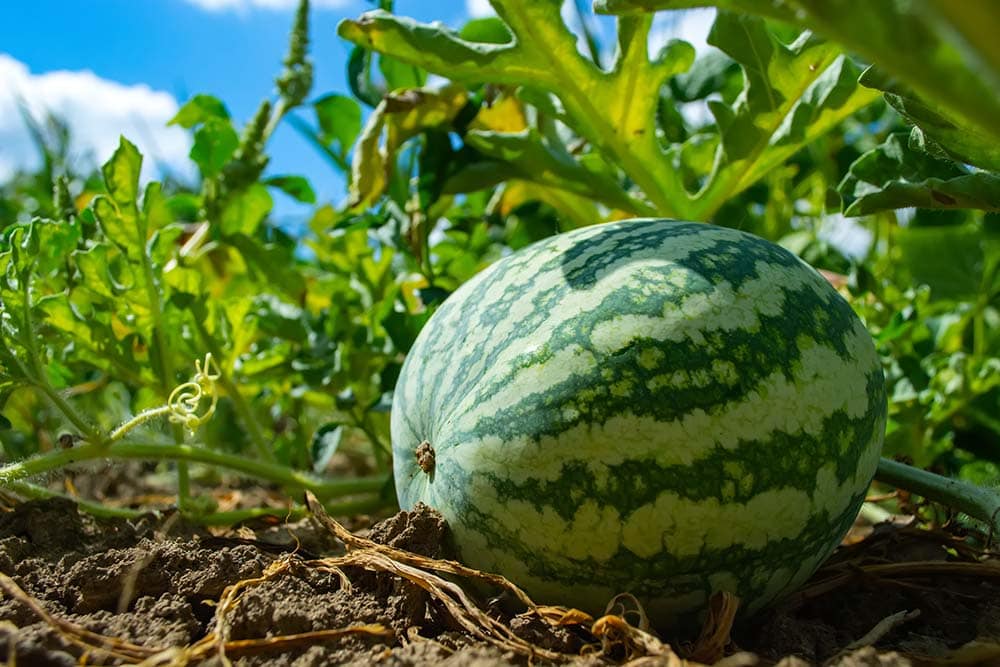
Melons and pumpkins hail from the same Cucurbitaceae family. This means that they share the same water, sunlight, and nutrient requirements. When pumpkins are planted next to melons, they can benefit from each other, as they attract beneficial insects like earthworms that mix up and aerate the soil.
Furthermore, the broad foliage of pumpkins covers the ground, reducing the chances of weeds growing underneath and choking out your melons. Unfortunately, there is a downside to pairing these two plant species together: they both require a lot of space to thrive.
Herbs Companions for Pumpkins
There are various types of herbs that thrive alongside pumpkin plants. These herbs attract beneficial insects, repel pests, improve the soil, enhance the flavor of your pumpkins, and even have home applications. They include:
11. Marjoram
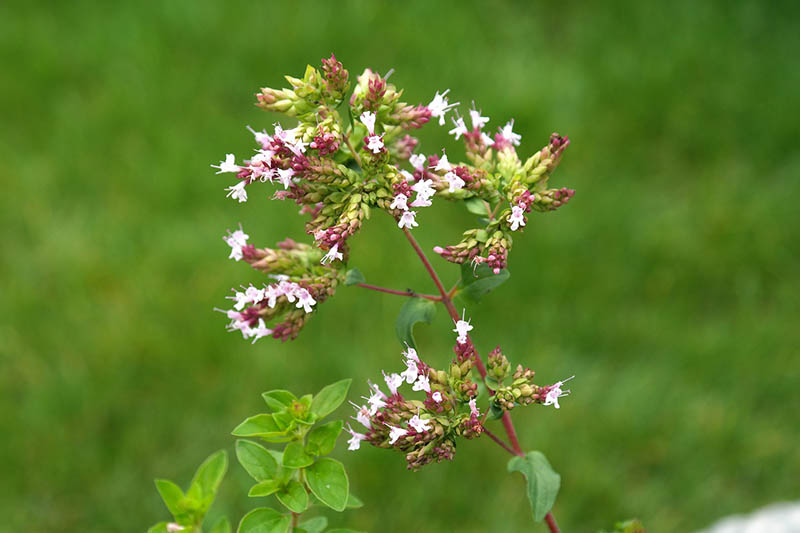
Most gardeners usually confuse this herb with oregano, but they are very different. This plant species is sweeter compared to oregano and usually has a spicy and floral scent. When planted next to pumpkins, it can improve the taste by adding flavor to your meals. So, once you add this plant to your home garden, you not only improve the taste of your pumpkins, but you also get a fine herb to add to your ingredients.
12. Oregano

The oregano plant is a close cousin of the marjoram. It is also spicy and mostly used in Mexican and Italian cuisine. As a companion plant, the hot taste and spicy smell help drive away any pests that may want to feed on the pumpkin plants. The dreaded cabbage and squash bugs that feed on pumpkins can barely stand the spicy smell produced by oregano.
This plant also attracts beneficial insects like hoverflies that prey on aphids. Oregano also benefits from this pairing because pumpkin prevents the growth of weeds that would otherwise choke out your oregano plants.
13. Dill
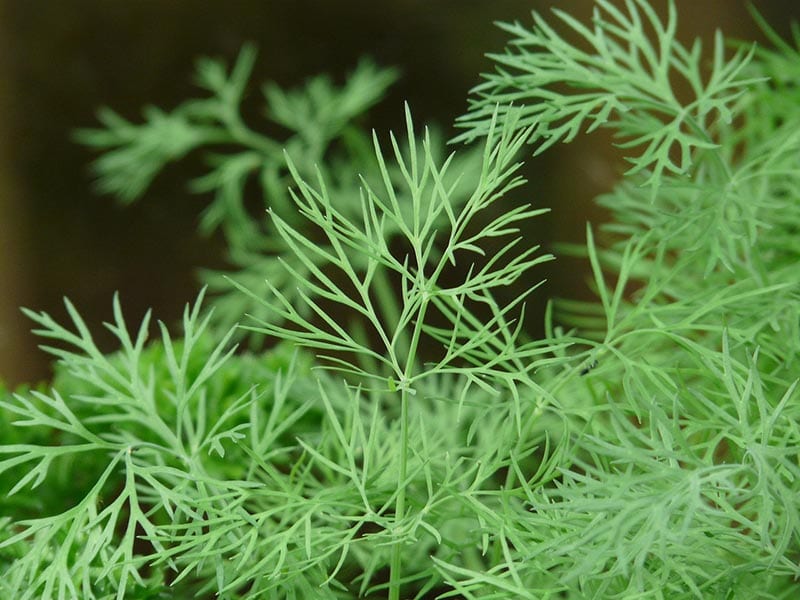
Dill is a popular cooking herb among chefs because it produces a lovely aroma that cannot be found in commercially sold food additives. Most people prefer growing dill in their yards instead of buying from the farmer’s market because this is the only way they can be sure their dill is fresh.
As a companion plant, dill repels pests like the squash bug, which is notorious for ravaging pumpkin patches. When you plant dill next to your pumpkins, you protect your pumpkin from pest attacks and get a great herb for your meals.
14. Tansy

Tansy is a type of ornamental plant that is usually planted next to vegetables like pumpkins to boost potassium levels in the soil. It is also widely known as a pest deterrent, especially on Japanese beetles. When you plant tansy next to your pumpkins, you not only beautify your home garden but also minimize the chances of pest infestation in your yard.
15. Korean Licorice Mint

Mint herbs are a great companion plant for pumpkins and are great at preventing ants from running amok in your vegetable garden. The Korean Licorice Mint is especially suitable as a pumpkin partner plant because it attracts a host of beneficial insects. These insects include hoverflies, which prey on pests such as mealybugs, mites, and aphids and can destroy your pumpkins if left to their own devices.
.
Worst Companion Plants for Pumpkins
As earlier mentioned, while some plant species may have a symbiotic and beneficial relationship with pumpkin plants, others are just poor partner plants for various reasons, such as inhibiting growth and producing poorer yields.
1. Large Root Crops
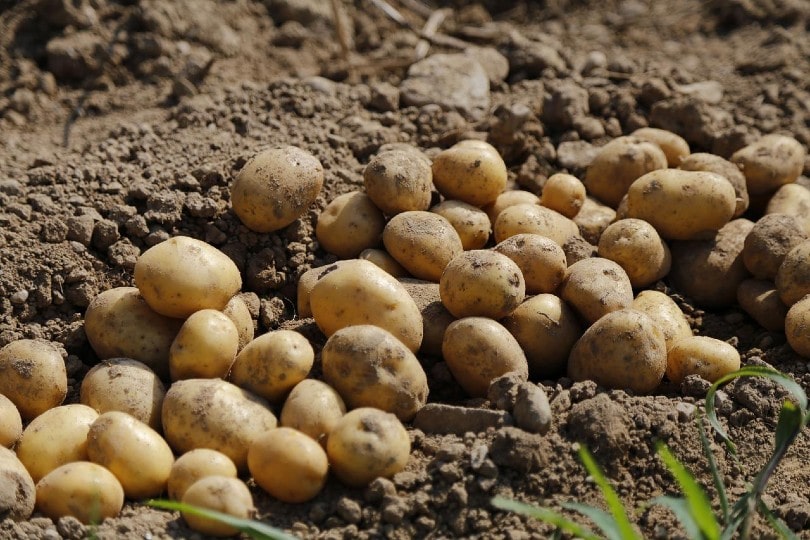
Some plants tend to produce huge underground roots, and for a good harvest, you want them to grow as big as possible. Such tuberous roots may conflict with the fibrous and extensive root system that pumpkin plants produce. Common large root plants you should avoid planting in your pumpkin patch include:
- Potatoes
- Onions
- Carrots
- Rutabaga
- Beets
- Turnips
2. Brassicas
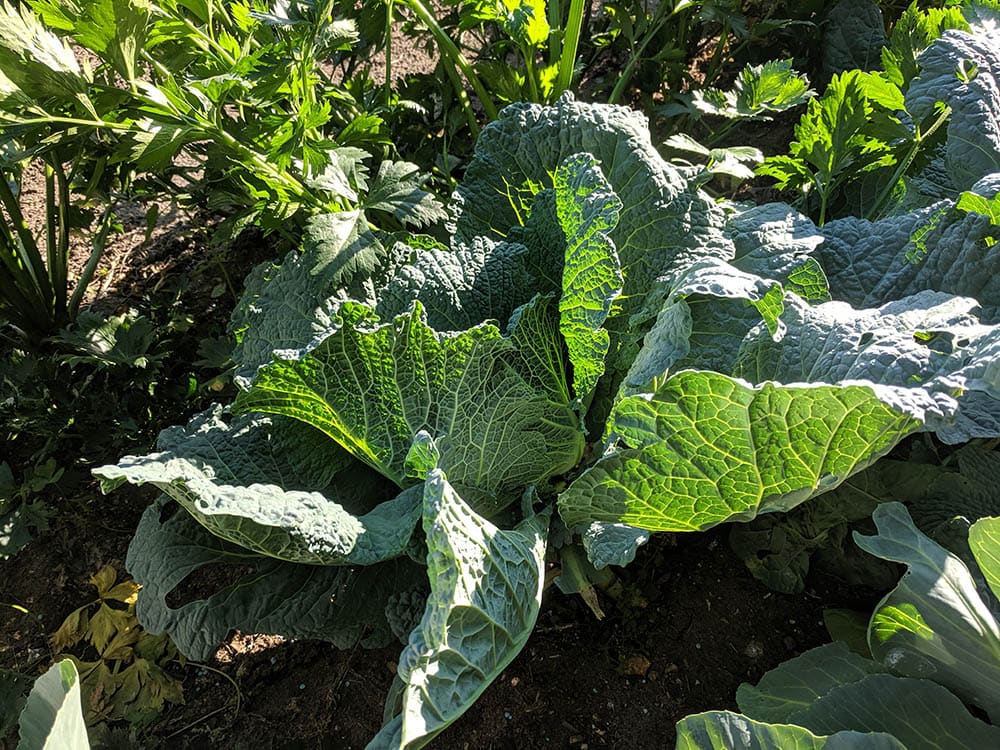
Brassicas do not pair well with pumpkins due to their high nutrition demands. When planted as companion plants, brassicas can easily steal available nutrients from your pumpkin patch, resulting in big, lush green foliage with small, stunted pumpkins. So, it’s best to plant this plant family far from your pumpkin garden.
- Cabbage
- Broccoli
- Cauliflower
- Kale
3. Cucurbits

As earlier mentioned, pumpkins belong to the cucurbit family. The cucurbits also include winter squash, gourds, melons, and cucumbers. While some plants like melon can be paired with pumpkins, cucurbits tend to cross-pollinate with other members from the same family.
This is not an issue during the first planting season. However, if you intend to gather seeds to propagate future pumpkin plants, your crop seeds will not be a hundred percent authentic. When these cross-pollinated seeds are planted, you could end up with misshapen and oddly colored pumpkins. So, cucurbits are not ideal pumpkin companion plants if you want to save seeds. Alternatively, plant them as far apart from each other as possible.
4. Heavily Vining Plants

For a pumpkin companion plant, your choice should not be the heavily vining variety. Since pumpkins have aggressive vines, when paired with other heavy vining plants such as winter squash, you could end up with a tangled mess in your garden.
Besides being unappealing, overcrowded plants are susceptible to the spread of plant diseases. So, it is best to separate sections of the garden to prevent overcrowding.

Tips for Choosing Companion Plants for Pumpkins
Before you opt for a companion plant to add to your pumpkin plant, there are several things that you need to check.
- Make sure that your plants are mutually beneficial to each other and have an equal relationship. Otherwise, either of your plants will get the short end of the straw and suffer.
- Ensure that your companion plants are not in any way harmful to pumpkins. Certain plants can have catastrophically lower yields when planted next to pumpkins.
- Your companion plant should not compete for the nutrients and space that pumpkin plants require to thrive. Since pumpkins prefer a lot of soil nutrients, consider adding fertilizer and compost to promote healthy growth.
- Your companion plant should be able to thrive, or at least survive, in similar growing conditions as your pumpkins.
- Make sure that your yard has enough space for both plants to spread and thrive without choking each other as they fight for space and nutrients.

Conclusion
Companion planting is the best way to increase the yields of your pumpkins and your garden in general. They not only attract beneficial pollinators and repel pests from your pumpkin garden, but they also conveniently add a splash of color and interest to your yard. Some of them even help sweeten and add flavor to your pumpkins.
There are many different plant species you can grow alongside your pumpkin plants, but the 15 plants mentioned above are the most common and successful partner plants. These plants share similar growing conditions and have the same water, nutrients, and space requirements.
Featured Image Credit: Max Lindenthaler, Shutterstock
Contents
